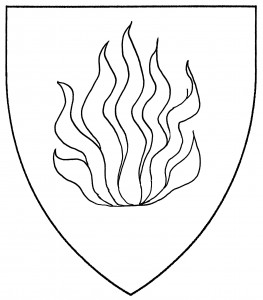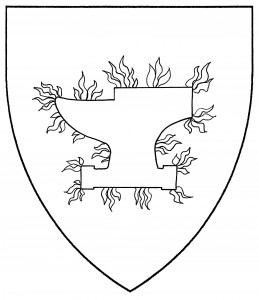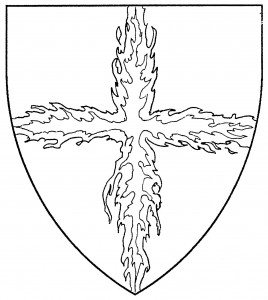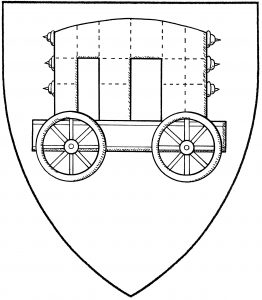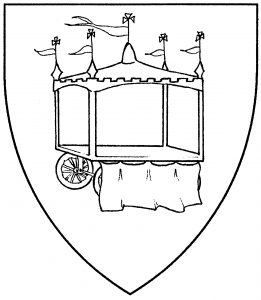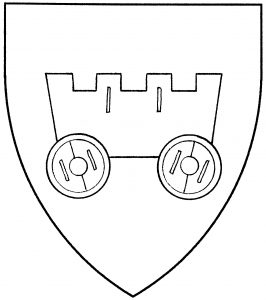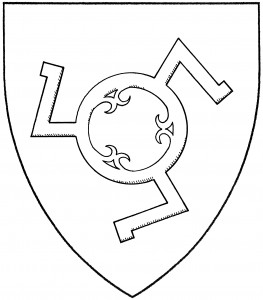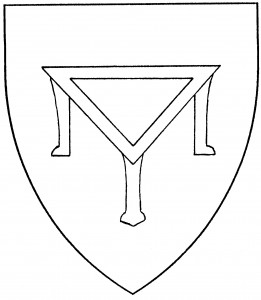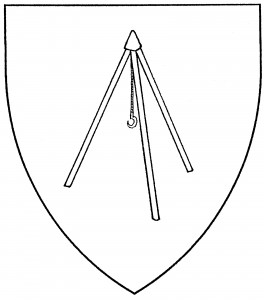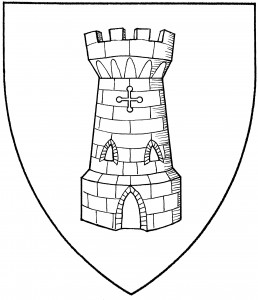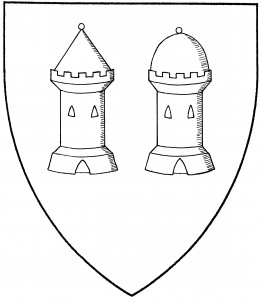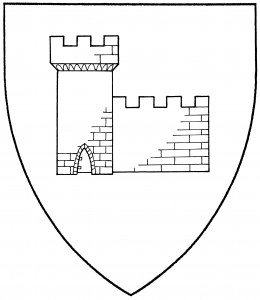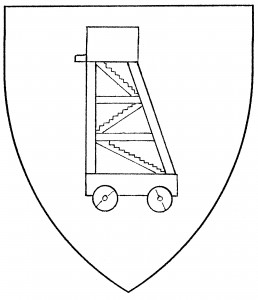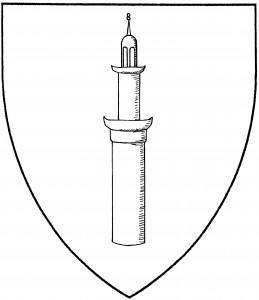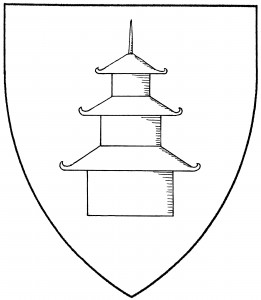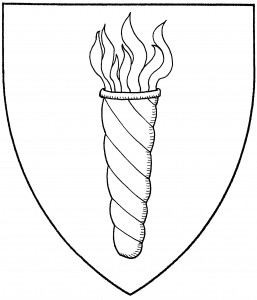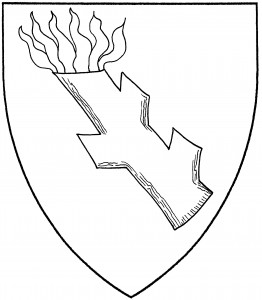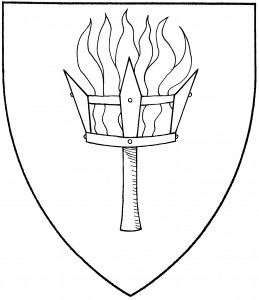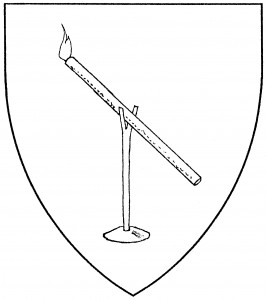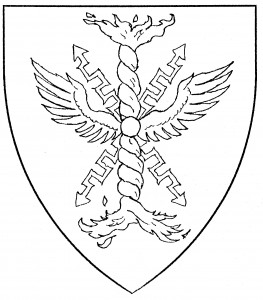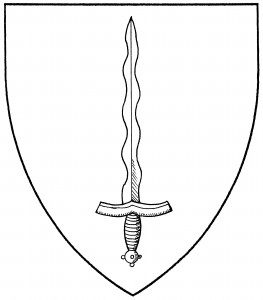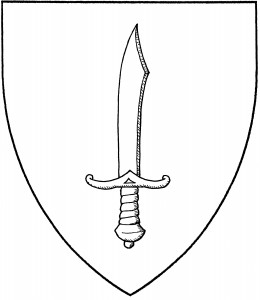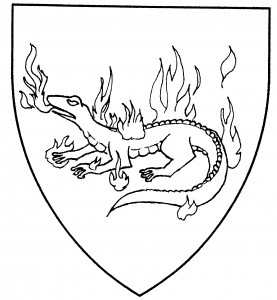A flame is the area of combustion which gives off heat and light in a fire. It may also, more fully, be termed “flames of fire”. A single flame is drawn rather as a gout or ball, with several tongues to chief. Flames are found in the canting arms of de la Fiama, mid-15th C. [Triv 194], and in the arms of Wells, c.1525 [DBA2 338].
Flame “proper” is red and gold; its exact depiction in Society armory has changed over the years. At first, a “flame proper” was drawn as a “flame gules voided Or” on a light-tinctured field, and as a “flame Or voided gules” on a dark-tinctured field. Currently, flame proper is drawn with alternating tongues of red and gold, which is more in keeping with period depictions of the charge.
The Society’s depiction of a “[charge] enflamed” has also changed over the years. Originally, a “[charge] enflamed” was equivalent to “on a flame a [charge]” – with the exception of candles, lamps, torches, and the like, where “enflamed” simply means “lit”. Currently, a “[charge] enflamed” is drawn as it would be in medieval armory: with spurts of flame issuant from and surrounding the charge. The illustration shows an anvil enflamed.
Charges have also been constructed of flame in the Society: e.g., the “bordure of flame”, “cross of flame”, “sword bladed of flame”, &c. This usage is no longer permissible, not only for lack of period examples, but because such charges’ identifiability is greatly reduced.
For specific charges which involve flame, see: altar, beacon, brazier, fireball, fireplace, phoenix, salamander, torch.
The Baron of Starkhafn bears: Per bend sable and checky argent and azure, in sinister chief a flame of fire proper within a laurel wreath argent.
William of Sark bears: Sable, a flame proper.
Jumana al-Zarqa’ bears: Argent, three flames sable.
